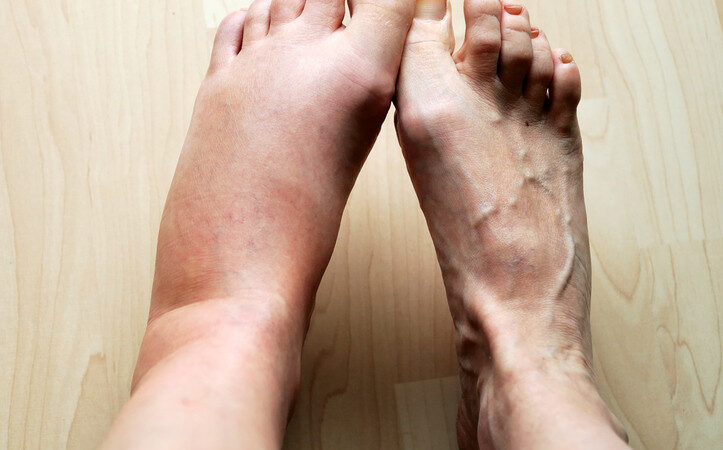
Painless swelling of the legs is a common problem that a hundred different things can cause. These can range from everyday issues like standing or sitting too long to serious conditions such as congestive heart failure. Here is a rundown of common reasons for Warner Robins leg swelling and what you can do about it.
Edema
It is common for your legs or feet to be puffy, especially if you have been standing all day. That can also happen if you have been sitting for extended hours; for example, in a car or a plane. When you sit or stay in one position for too long, fluid builds up in your feet and legs, causing swelling. This can occur in anyone, but it is more common in overweight individuals and pregnant women.
Fortunately, there are several things you can do to bring down the swelling. First, you want to limit your consumption of sodium-rich foods; eating too many salty foods contributes to swelling. You also want to avoid being in one position for a long time; get up frequently to stretch and move. Propping up your feet, walking, and doing ankle rolls can help alleviate mild swelling.
Venous insufficiency
Sometimes the valves in your veins weaken or get damaged, allowing some blood to pull in your blood vessels instead of flowing to the heart. Varicose veins often cause no symptoms except their unsightly appearance, but sometimes these damaged veins can result in pain, muscle aches, leg swelling, and skin discoloration. If you have varicose veins, your healthcare provider may recommend lifestyle changes like weight loss and regular exercise. They may also prescribe gradient compressions stockings; these steadily squeeze your legs to promote blood circulation and prevent swelling. Other times medications or surgical treatment may be necessary to treat varicose veins.
Deep vein thrombosis
Deep vein thrombosis occurs when a blood clot forms in a major blood vessel, usually in your pelvis, thigh, or leg. Typical symptoms of deep vein thrombosis include pain or tenderness in your leg, enlarged veins close to your skin’s surface, and swelling in one leg. The swelling is usually accompanied by red skin that is warm to the touch. Deep vein thrombosis, as it is, is not life-threatening. However, if a clot breaks free, travels to your lungs, and blocks blood flow, it can lead to pulmonary embolism, which is life-threatening.
It is important to seek medical treatment immediately if you notice signs of deep vein thrombosis to reduce your risk of pulmonary embolism. Your doctor may recommend elevating your legs, wearing compression garments, medications, or surgical treatment.
Liver, kidney, or heart disease
Fluid can accumulate in your legs when your organs are not functioning as they should. For example, medical problems like kidney disease, liver disease, and congestive heart failure can all cause leg swelling. Talk to your healthcare provider if you suspect you have any of these conditions or notice persistent swelling in your legs.
If your swollen legs do not improve with lifestyle changes like exercise and weight loss, visit your doctor at Middle Georgia Vascular Surgery Center & Vein Solutions for medical treatment.

